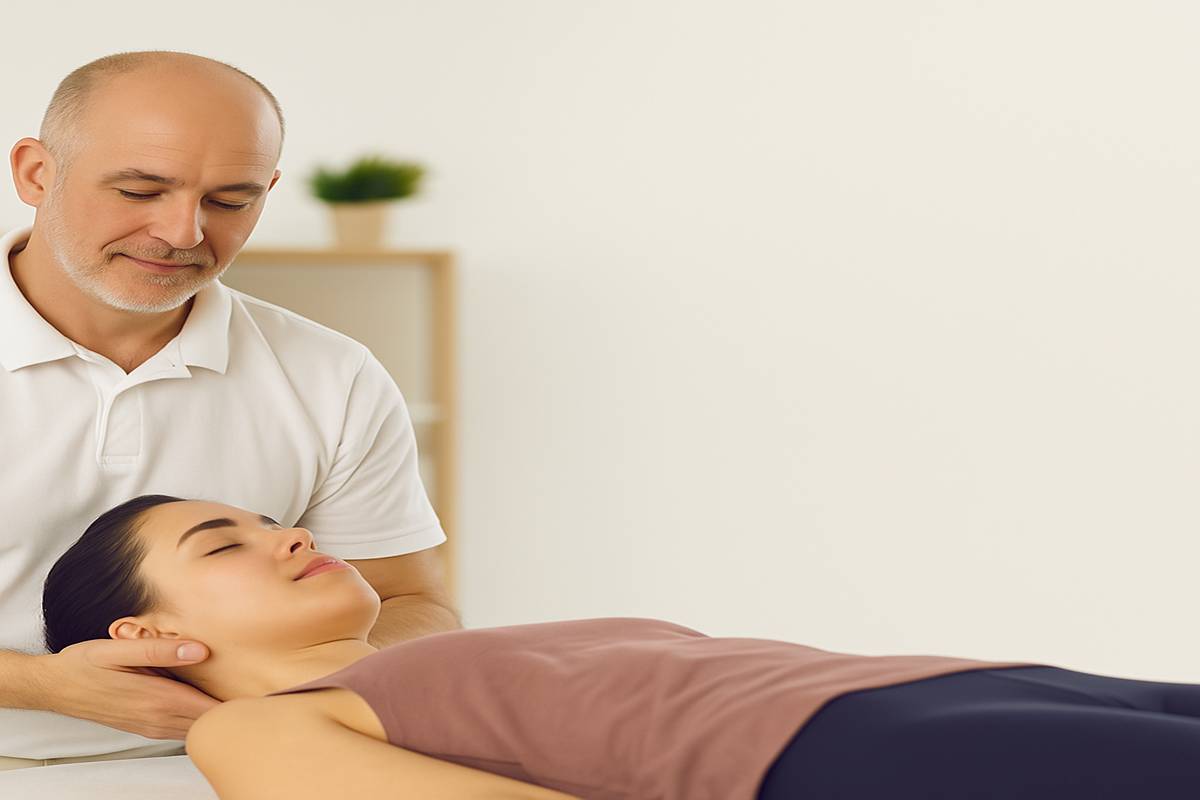
Osteopathy in the Digital Age: Bridging Traditional Care with Modern Needs
In today's rapidly evolving healthcare world, blending modern technology with traditional care has become vital. While many Canadians benefit from digital health tools, people in Brampton are increasingly seeking holistic solutions like osteopathy to manage pain and improve mobility.
Understanding Osteopathy
Osteopathy is a hands-on therapy that focuses on how the body’s bones, muscles, and tissues work together. Practitioners gently stretch, move, and massage muscles and joints to promote healing. It's often used to treat conditions like chronic back pain, migraines, joint stiffness, and posture problems.
This natural approach helps people regain balance and supports the body’s own ability to heal — without surgery or strong medication.
Why Brampton Residents Are Turning to Osteopathy
In Brampton, osteopathy is gaining popularity thanks to greater awareness of natural treatments and patient-centred care. One major development is the launch of Canada’s first formal osteopathy degree program at Sheridan College. This milestone is helping build more skilled practitioners to meet the needs of Ontario’s growing and diverse population.
Students at Sheridan not only study in classrooms but also treat real patients at the Osteopathy Care Clinic. Located on the Davis Campus, this clinic offers low-cost treatment to the public, supervised by certified professionals.
Real-World Results from Osteopathy
Osteopathy is backed by research and real-life results. A published case study showed how osteopathic treatment reduced chronic cough in a patient with GERD (acid reflux), when other treatments failed. You can read the full study, which highlights the value of hands-on care even in digestive conditions.
In Brampton, many patients are now choosing osteopathy not just for pain relief, but also for improved function, better sleep, and overall quality of life.
Technology Meets Traditional Care
Although osteopathy is manual, modern osteopaths use digital tools to streamline care. Many Brampton clinics now offer:
- Online appointment booking
- Virtual consultations
- Secure patient record systems
- Educational health resources on their websites
These changes save time for patients and improve communication between practitioners and clients, which is especially helpful for those with busy schedules or mobility issues.
Who Benefits from Osteopathic Treatment?
Osteopathy can help a wide range of people. It’s often used for:
- Long-term back or neck pain
- Sports injuries
- Poor posture
- Jaw pain (TMJ disorders)
- Work-related strain or poor ergonomics
- Prenatal or postnatal support
Since osteopaths look at the whole body, they often find connections between symptoms that other treatments may overlook.
Where to Get Osteopathic Care in Brampton
If you're in Brampton and seeking personalised osteopathic treatment, drkeogh offers expert care tailored to your health goals. Their clinic supports natural healing with gentle techniques, ensuring patients feel safe, seen, and supported throughout their journey.
Frequently Asked Questions
1. Is osteopathy safe for children and seniors?
Yes, osteopathy is gentle and can be adapted for all age groups. Treatments are often used for growing children, active adults, and older adults managing arthritis or mobility issues.
2. Do I need a referral to see an osteopath in Brampton?
No referral is needed. You can book an appointment directly with any registered osteopath.
3. Is osteopathic treatment covered by insurance in Ontario?
Many extended health benefit plans cover osteopathic care. Check with your provider or review Ontario’s health policy via Ontario.ca.
4. How long does each session take?
Sessions typically last 30 to 60 minutes, depending on your condition and treatment plan.
5. How often should I go for treatment?
That depends on your health goals and how your body responds. Your osteopath will suggest a schedule during the first visit.
6. Is there evidence that osteopathy works?
Yes. Clinical studies and case reports — such as those published by Sheridan College — show that osteopathy can reduce pain, improve function, and enhance quality of life.
7. Are osteopaths in Ontario regulated?
Osteopathic manual practitioners in Ontario are typically members of professional associations like the Ontario Association of Osteopathic Manual Practitioners (OAO), ensuring high training standards. You can verify credentials through their official website.

Comments (0)